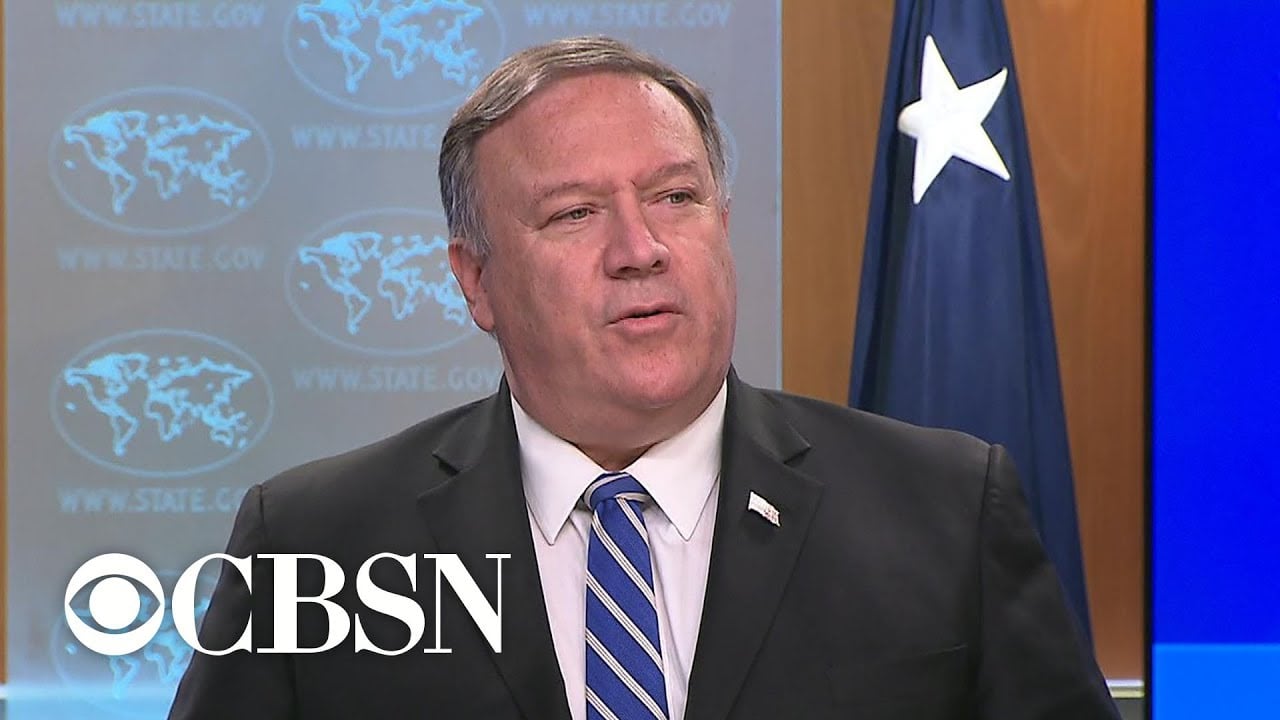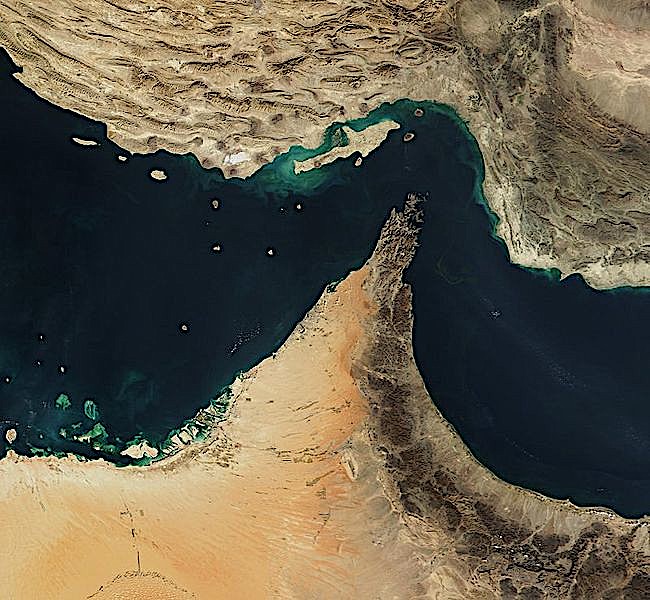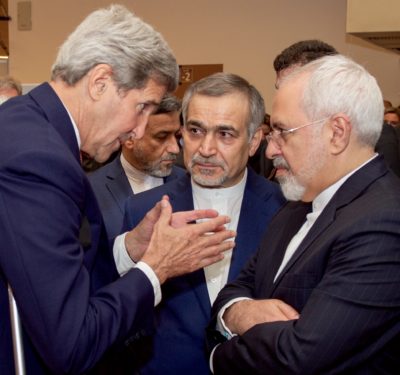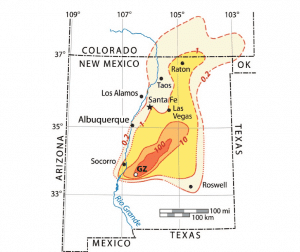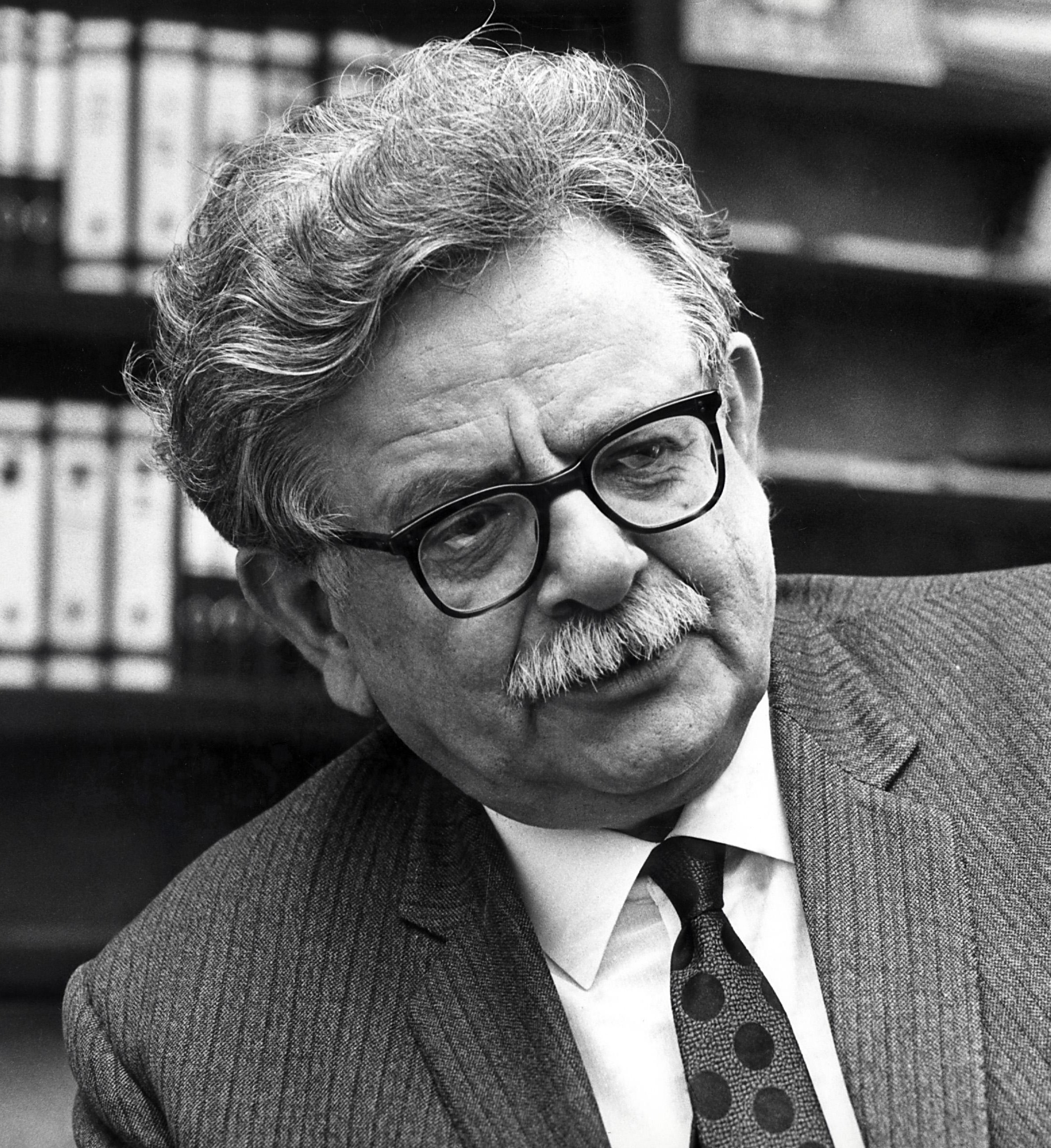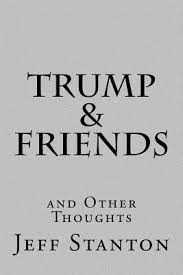Michel Chossudovsky discusses the recent US/Iran clash in the Persian Gulf;
Iran’s capability as a military power;
the breakup of the Gulf Cooperation Council;
the Al-Udeid military base in Qatar the largest US base in the Middle East, and Qatar an ally of Iran;
the flop of the proposed Middle East Strategic Alliance, also known as the Arab NATO;
the July 2016 failed coup d’etat against Turkish President Erdogan;
the US/Israel/Turkey “triple alliance” now a Turkey/Iran/Russia “triple entente”;
Turkey’s purchase of the Russian S-400 missile defense shield constitutes its de facto exit from NATO;
the geopolitical realignment of the Middle East and its repercussions on the North Atlantic Treaty Organization.
Listen to the interview below. Transcript follows.
***
This is Guns and Butter.
What I think is important is that, de facto, Turkey is no longer part of the North Atlantic Treaty Organization. You may have noticed that the reaction from Washington has been dead silence and the media as well. The repercussions on the military-industrial complex are dramatic, and whatever happens, Turkey de facto is out of NATO.
And with Turkey’s withdrawal from NATO, inevitably it will have repercussions, and other member states might choose to withdraw from the North Atlantic Treaty Organization.
I’m Bonnie Faulkner. Today on Guns and Butter, Michel Chossudovsky. Today’s show: US Foreign Policy in Shambles – NATO and the Middle East. Michel Chossudovsky is an economist and the Founder, Director and Editor of the Center for Research on Globalization, based in Montreal, Québec. He is the author of eleven books, including The Globalization of Poverty and the New World Order, War and Globalization: The Truth Behind September Eleventh, America’s War on Terrorismand The Globalization of War, America’s Long War Against Humanity. Today we discuss the recent clash with Iran in the Persian Gulf, Iran as a military power, the breakup of the Gulf Cooperation Council, the flop of the proposed Middle East Strategic Alliance, also known as the Arab NATO, the coup d’état again Turkish President Erdogan, and the geopolitical realignment of the Middle East and its repercussions on the North Atlantic Treaty Organization.
Bonnie Faulkner: Michel Chossudovsky, welcome.
Michel Chossudovsky: Good morning. Delighted to be on the program.
Bonnie Faulkner: In June, Iran shot down an unmanned US drone that Iran claimed was in its air space. This was followed by threats from President Trump. Two days later, Trump announced that US jets were headed towards targets in Iran, but that he called off the strike 10 minutes before engagement. What do you make of this bizarre statement?
Michel Chossudovsky: Well, that statement is full of contradictions and, in fact, the media coverage of that event seems to have excluded one very important element, namely that the Al Udeid air force base in Qatar from which these air raids would have been launched, and which also constitutes the forward headquarters of US Central Command, happens to be in a country which is the closest ally of the Islamic Republic of Iran, namely Qatar. Qatar and Iran share the largest maritime natural gas base in the world. From an economic and energy point of view it’s absolutely strategic. They are allies.
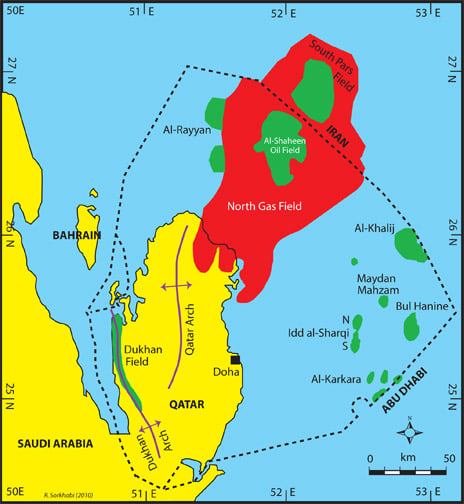
But bear in mind, US Central Command headquarters confirmed the deployment of US Air Force F22 stealth fighters, following Trump’s statement, out of Qatar. They also made a statement to the effect that this was to defend American forces and interests in the region.
Now, how is it that US foreign policy architects didn’t take the trouble to verify that this particular military base, which is technically the property of Qatar, which is an emirate, and which is most probably one of the largest air force operations on the planet—I’m quoting The Washington Times.
Now, US Central Command’s forward Middle East headquarters is located in enemy territory. Now, either people are absolutely stupid in the State Department or the Pentagon or they simply know well in advance that they can’t do this. That location is not appropriate because it’s a country which is swarming with Iranian business people, security personnel, the Russians and the Chinese are there. Qatar is no longer under the helm of Saudi Arabia. It has declared its alliance with Iran. And then, ironically, the Atlantic Council, which is a think tank closely tied both to the Pentagon and NATO, has confirmed that Qatar is now firmly allied with both Iran and Turkey. You can’t really go around that. So what is it? Sloppy military planning, sloppy US foreign policy, sloppy intelligence?
I personally believe that there was never a plan to launch a war against Iran from that forward US Central Command headquarters in enemy territory. It’s an impossibility. But there are other elements beside that. There’s the whole structure of US military alliances which is in such a mess that a conventional theater war against Iran is virtually impossible.
Bonnie Faulkner: In your most recent article, A Major Conventional War Against Iran Is an Impossibility; Crisis Within the US Command Structure, you explore two crucial areas that make a US attack on Iran not a winning strategy, i.e., Iran’s military power and the evolving structure of military alliances. First of all, how do you assess Iran as a military power?
Michel Chossudovsky: Iran has advanced capabilities and it also has very large ground forces. It’s a country of 90 million people. We’re not dealing with an Iraq 2003 situation where the country had already been destroyed. We’re dealing with a country which has advanced capabilities, in many regards comparable to those of Turkey, and which has some very powerful allies. Iran is allied with Russia; we know that. Now, I don’t think that Russia will intervene, but the S-400 which has recently been delivered to Turkey is now slated to be delivered to Iran. This is also something which military analysts and the Western media failed to address.
If you go back to 2003, when Donald Rumsfeld formulated a blitzkrieg directed against the Islamic Republic of Iran—well, there was a plan back in 2003 in the wake of the Iraq war and going on to 2005, and they had what they called a plan of encirclement of Iran. Now, when they say encirclement of Iran, that means that neighboring countries are proxies of the United States. They will take orders, they’re linked to NATO and so on.
But even then, the national security advice was to postpone that war. The conditions for waging the war in 2003-2005 were there and they favored the United States. But even then they hesitated precisely because Iran had missile capabilities, extensive ground forces, and despite the encirclement they postponed that military operation. There are various scenarios which were formulated.
But today, let’s look at the geography or the geopolitics of that region. Turkey has a border with Iran and Turkey is the heavyweight in NATO. Turkey now has excellent relations with neighbouring Iran, it’s not a formal military alliance but they are on very good terms. And Turkey now has signified to the United States, you won’t be able to wage a war against Iran from Turkish territory, either in terms of ground forces or air force, etc.
But if you look at the map, there’s not a single country there on which the United States can rely to help them, including Iraq. The Iraqi government has said no, we will not allow for the movement of US forces in Iraq towards the Iranian border.
Now, the other pivot there is Pakistan. As we recall some several years back Pakistan was the staunch ally of the United States. It’s no longer the staunch ally of the United States; it’s the staunch ally of China. The United States will not be able to rely on Pakistan in a war directed against Iran.
They’ve lost Pakistan. Pakistan is no longer a military ally.
Then you have several of the former Soviet republics, which had partnership agreements with NATO, good bilateral relations with the United States. I’m thinking of Azerbaijan. Well, just last December, Iran and Azerbaijan signed military cooperation agreements, and that means that the United States cannot rely on Azerbaijan. Similarly, it can’t rely on Turkmenistan. It’s impossible to wage a war out of Afghanistan because the Taliban are occupying a large part of the national territory. So a ground war is an impossibility and a traditional air war, I think, is also an impossibility because there are questions of air space. And we know that the United States relies heavily on its allies to do the dirty work.
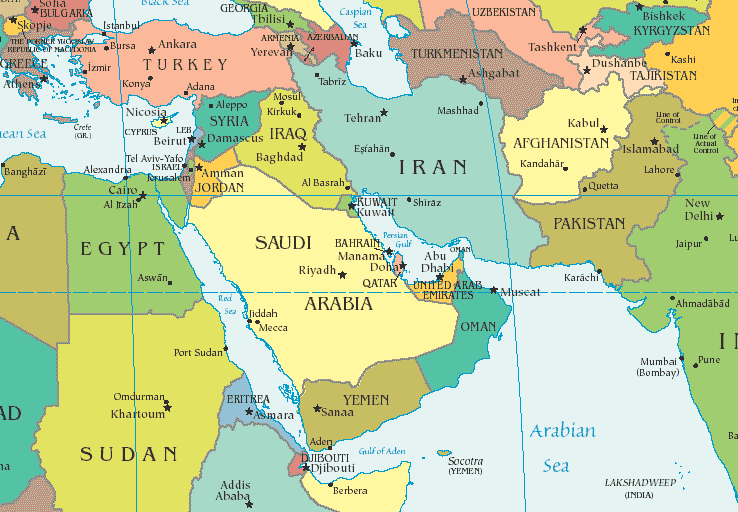
Then, of course, there’s Saudi Arabia and the Gulf states, and the Gulf Cooperation Council, the GCC, is split down the middle with Qatar, Oman and Kuwait in favor of normalizing relations with Iran, and in the case of Qatar it goes beyond that. But can the United States rely on Kuwait and Oman? In no way.
Oman has very good relations with Iran on the one hand, and it also controls the entry to the Strait of Hormuz from the Gulf of Oman into the Persian Gulf. If you look at the geography, well, of course, Pakistan controls part of the Arabian Sea, and if you look at naval access to US military facilities in the Persian Gulf it’s not an easy task; you still have to go in and out, and you’re going in and out either through Iranian territorial waters or through those of Oman.
[Gulf Cooperation Council]
And now with the split down the middle of that Gulf Cooperation Council, you have several of those countries, emirates, which are strategically favoring Iran instead of the United States. And there’s a whole geopolitical dimension to that, because for instance the United States has military bases in Kuwait, it has military bases in Bahrain and then, of course, as I mentioned earlier it has military bases in Qatar, which is aligned with the Iran. So it’s very difficult for them to wage a naval operation when the Gulf Cooperation Council, which of course is a US project initially, is in crisis.
Another element is that just about a couple of months back, the United States had sponsored what was called the Arab NATO, it was a middle East strategic alliance and it was supposed to be inaugurated in Riyadh, Saudi Arabia. It really never got off the ground because this was a project to integrate the Gulf Cooperation Council with two other countries, which were Jordan and Egypt. Now, Egypt decided to drop out and, in fact, they boycotted this meeting, which was held in Riyadh and Trump was there. That was his second visit to Saudi Arabia. Earlier he had gone in 2017. And in 2017 they actually launched the Arab NATO and what it actually resulted in was the rupture of the Gulf Cooperation Council and now this Arab NATO virtually is defunct; it’s not working. There’s no body of countries, maybe with the exception of the Emirates and Saudi Arabia, that whole region now is shifting. At least either it’s becoming neutral and normalizing its relations with Iran or it’s in the case of Qatar, it’s an actual ally of Iran.
So it’s a big mess. The structure of alliances is disrupted, and then the question is, how do you wage a war if you don’t have allies?
Bonnie Faulkner: With regard to the evolving structure of military alliances, in May of 2017 the Gulf Cooperation Council—that is Saudi Arabia, Kuwait, United Arab Emirates, Qatar, Bahrain and Oman—split apart. What happened?
Michel Chossudovsky: This is a very complex issue. There was a meeting which took place in Riyadh when Trump first came to Riyadh. I think it was on the 21st of May. On the 21st of May 2017 a US Islamic Summit took place. Again, the media never really looks at the chronology of these important events and inter-relationships. But what happened on the 21st of May 2017 with the approval of US officials was the endorsement of a proposed Middle East Strategic Alliance, which was composed of Egypt, Jordan, plus the six nations of the GCC, namely Saudi Arabia, the UAE, the Emirates, Bahrain, Kuwait, Qatar, and Oman.
So that all in all that Arab NATO was supposed to be an alliance of eight countries, which would then have the mandate, and that mandate was explicit. It was essentially to confront Iran or to confront Iranian influence in the Middle East.
Now, what happened is that two days later, on May 23, 2017 Saudi Arabia ordered a blockade and embargo of Qatar, following alleged statements that the emir of Qatar was supporting Iran, and I think that statement is correct. Qatar was aligning itself with Iran and essentially what what happend at the meeting on May 21st— Saudi Arabia and the US decided to exclude Qatar from the Arab NATO.
I think that was the scenario. We go ahead with Arab NATO ceremoniously adopted the project on the 21st of May knowing that one of the member states of the GCC, namely Qatar was sleeping with the enemy, and then two days later embargo. It was an act of war. It was an embargo cutting off of borders, cutting of naval and sea routes and essentially isolating Qatar.
But what happened was not what they wanted to happen. What they wanted was to go from GCC with six member states to GCC with five member states and what happened is that this triggered a crisis within the GCC, with Kuwait and Oman siding with Qatar so that the GCC was split down the middle. And as a consequence, the Arab NATO, which was conceived on the 21st of May with eight members, went down to five and then subsequently what happened is that Egypt withdrew and essentially you’ve only got about four countries now, which are part of the core of that Arab NATO, which are essentially Saudi Arabia, the Emirates, Bahrain and Jordan. There are four countries which are firmly behind it. Again, that’s a flop; in other words, the United States, the Trump administration, has virtually lost its GCC alliance in the Middle East. And not only that; it has its Central Command headquarter forward base in enemy territory. I give them a C-minus as far as foreign policy is concerned.
Bonnie Faulkner: Since Qatar and Iran have joint ownership of the world’s largest maritime gas fields, they needed to be in alliance with one another, it seems to me. What do you think was behind Saudi Arabia’s blockade of Qatar? Did Saudi Arabia want the Maritime gas fields or was it simply that Saudi Arabia insisted on the isolation of Iran?
Michel Chossudovsky: I think the main objective was to exclude Qatar from Arab NATO and create conditions, perhaps divisions within Qatar. I think the first short-run objective was that. They considered that one of the members of the GCC was sleeping with the enemy and they also indicated very firmly, you can come back into the GCC and so on and resolve relations, but then you have to really give up your relationship with Iran, which they’ll never do.
Because first of all that partnership in the North gas fields, it’s joint ownership, north and south gas fields. It has a territorial division, with regard to Maritime rights, but this is a joint venture. It’s ownership is common to the two countries and that’s very important. So for them to abandon that, particularly after the embargo, is very unlikely right now.
I’ve been to Qatar several times since the May 17th occurrence and I can say, first of all, public opinion is very anti-Saudi, even though they have proximity in cultural terms and they have Qataris living in Saudi Arabia. But the way this was handled was so brutal it’s unlikely that Qatar will ever go back into an alliance with Saudi Arabia.
So it’s Saudi Arabia which is being isolated; it’s not Qatar and it’s certainly not Iran. Iran is on friendly terms with several of America’s staunch allies. It has gained Qatar. It has also gained Oman and Kuwait, not to say that these are countries which are allied strategically with Iran but they entertain good relations. And then if you look at it more broadly, Iran has good relations with Azerbaijan, it has good relations with Turkey, it has good relations with Iraq and, of course, it has excellent relations with Pakistan. And that’s important because of the issue of Balochistan, where there’s a separatist movement. The Balochs are both in Iran and in Pakistan. Also, there’s been a shift and it’s very much due to the fact that the two governments are now collaborating.
So there we are. And Egypt, of course, which is a powerful country in the Middle East, has signified that it will not join an alliance which is directed against Iran. Not to say that the two countries have good relations, but they have normal relations, Iran and Egypt. But Egypt is not going to join a US project directed against Iran.
Bonnie Faulkner: Since the Al Udeid base near Doha (image below), Qatar is America’s largest military base in the Middle East, why would the US or President Trump support a land, air and sea blockade of Qatar?
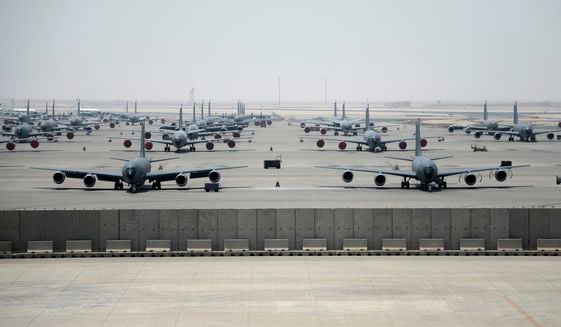
Michel Chossudovsky: Well, de facto they’re supporting the land, air and sea blockade because they’re supporting Saudi Arabia, but there’s still trade relations and there’s a military cooperation agreement. In fact, the US attitude is rather weird, because they have signed a new military cooperation agreement with Qatar and they are acting as if nothing has happened. They have signed with Qatar a bilateral agreement, but they have not raised the fact that Qatar is sleeping with the enemy or has relations. They haven’t imposed any kind of conditions on Qatar with regard to their relations with Iran. And Trump met the emir of Qatar at the United Nations General Assembly two years ago in October 2017.
You see it’s a very contradictory type of relationship. They don’t want to say, we’re moving out of Qatar and putting our central command headquarters somewhere else; they’re not intimating that they’re doing that. Some of the command structures have been moved, inevitably, and again, central command operates out of Florida, but the forward base in the Middle East is crucial.
The thing is, I think that Washington does not want to take on decisions of a controversial nature which would more or less reveal that Qatar is playing a double role. It’s hosting a US military facility and at the same time it has very good relations with the enemy. So that’s the situation.
And mind you that kind of attitude is unfolding with regard to Turkey’s recent acquisition of the S-400 air defense system from Russia, which de facto means that Russia—we’ve known this for years, but Russia and Turkey are now military allies because the air defense system requires military cooperation at a high level. You’re not just selling equipment; you are cooperating in terms of training, you are consulting one another, there’s a whole geopolitics behind it and what I think is important there is that de facto as of January 12th, Turkey is no longer part of the North Atlantic Treaty Organization.
Now, you may have noticed that the reaction from Washington has been dead silence and the media as well. They say, “Well, there are sanctions if you do it and we will exclude you from the F-35 jet fighter program, which is a NATO program.” The repercussions on the military-industrial complex are dramatic, because we’re seeing now the competition between Russia and the United States with regard to the sale of weapons, so it’s billion and billions of dollars of revenue which are at stake.
But at the moment, I don’t think the United States is saying, “Turkey, get the hell out of NATO.” They’re not going to say that, but what is possible is that Turkey will say, “We are withdrawing from NATO,” and whatever happens, Turkey de facto is out of NATO. Now, if let’s say more from a narrative point of view and public relations we still want Turkey to stay in NATO, not to disrupt, but eventually that’s going to come up. And with Turkey’s withdrawal from NATO inevitably it will have repercussions and other member states might choose to withdraw from the North Atlantic Treaty Organization. It’s what we call NATO exit, not to be confused with Brexit.
Bonnie Faulkner: You write that the US, Israel, Turkey triple alliance is now a new triple entente between Turkey, Iran and Russia. This sounds like a very major shift in geopolitical alliances, which you’ve just been starting to describe. What were the major forces driving this shift?
 Michel Chossudovsky: Back in the ‘90s there was an alliance between Israel and Turkey. It was a bilateral alliance, and it was a very close alliance between Turkey and Israel. Now, without going into the details, that alliance collapsed, and it also collapsed in relation to the actions of Israel against the Palestinian solidarity movement, and remember the Mavi Marmara boat, which was attacked by IDF forces. But it would appear that that alliance is dead, the bilateral relationship between Israel and Turkey.
Michel Chossudovsky: Back in the ‘90s there was an alliance between Israel and Turkey. It was a bilateral alliance, and it was a very close alliance between Turkey and Israel. Now, without going into the details, that alliance collapsed, and it also collapsed in relation to the actions of Israel against the Palestinian solidarity movement, and remember the Mavi Marmara boat, which was attacked by IDF forces. But it would appear that that alliance is dead, the bilateral relationship between Israel and Turkey.
And the bilateral relationship between the United States and Turkey is still there, but it’s also in a crisis situation, and the tripartite alliance Israel/Turkey/US or US/Israel/Turkey was really based on two separate bilateral agreements. But it’s certainly relevant now that that alliance between Turkey and Israel was very crucial inasmuch as it was also directed against Syria. It was directed against Syria and it was directed against Iran, and there was exchange of intelligence, so on and so forth. So there we have another element.
Let’s say we’re talking about a war on Iran, of course, Israel is obviously a major partner of the United States and NATO in that project. But there’s another element in US-Israeli relations. In effect Israel also has an unspoken and unofficial alliance with the Russian Federation, and we’ve seen this evolving, where Netanyahu has a personal relationship with Putin. I’m not passing any judgments; this is simply very factual. We have to understand they have a close personal relationship. We must also understand that many of the senior officers of the armed forces are from the former Soviet Union; they have families in the Russian Federation. So that there’s a tacit bilateral relationship between Israel and Russia which has developed over a number of years, which means that if there’s any kind of military involvement of Israel directed against Iran, which is an ally of Russia, there may be consultations to that effect. There may be consultations at that very high level of the military and intelligence establishment of those two countries. And now, just a few weeks back, the national security advisors of the US, Israel and Russia met in Jerusalem. Despite all the conflict which exists between US and Russia, the National Security Advisors had friendly conversations. But I think what was more important were the friendly conversations between Israel and Russia.
So again, alliances historically are built between sovereign countries, but there is what we would describe as cross-cutting coalitions. Cross-cutting coalitions means that you are allied with countries which are allied with your enemies. So Russia has a cross-cutting coalition with Israel and Israel has an alliance with the United States and with NATO. In other words, the Russian foreign policy has been extremely astute in building these alliances, and so has China for that matter.
Bonnie Faulkner: You have written that Israel and Turkey were close partners with the US in planned aerial attacks on Iran since 2005. If Turkey is now de facto exiting NATO and this alliance between Turkey and Israel is defunct then it seems that these 2005 plans to attack Iran are also defunct.
Michel Chossudovsky: They are absolutely defunct; yes, they are. Turkey is not going to participate in any kind of aerial attacks on Iran because it has a military cooperation agreement with Iran. It’s as simple as that. Well, I’m not sure at what level. And then I personally don’t think that Israel is the staunch partner that it was back in 2005. I’m saying staunch partner of the United States. I recall during the Bush administration Dick Chaney intimated, “Well, we’ll let Israel do it for us,” so that they were inciting Israel to actually bomb Iran, with of course a selected target, and then it would be presented as an initiative of Israel, with Washington saying, “Well, you know, they did it for us, but we didn’t really ask them to do it.” I recall the statements of Dick Chaney at the time. But I don’t think that despite the anti-Iran rhetoric in Israel or by Israeli leaders including Netanyahu, I don’t think that Israel under any circumstances would take the first step in an action against Iran.
And as far as a broader operation involving allies, I don’t think that that will occur. There is an alliance between Israel and Saudi Arabia, which was really built by the United States, and the United States thinks that they can have Israel and Saudi Arabia attack Iran on their behalf. I don’t think either as a result of the unspoken alliance between Israel and the Russia Federation, that if there were a war on Iran, that Iran would attack Israel. They will attack US facilities in the Persian Gulf, that is clear—which is just across the Persian Gulf, it’s a very short distance. Unless, of course, Israel is directly involved in aerial bombings, which I think will not happen.
To get back to the Pentagon agenda, right now, as I mentioned earlier, it’s very unlikely that an all-out war can be called for, sort of a blitzkrieg similar to that of Iraq or Afghanistan or Vietnam. That is out of the question. But what is more likely is a continuation of extreme sanctions as well as other actions and the possibility of what the Pentagon calls a bloody-nose operation, which means they will go in and bomb certain targets in Iran, which may be the nuclear facilities. That is certainly on the drawing board of the Pentagon right now, but even that, I doubt that they would . . . well, there are always mistakes and there are people like Pompeo and Bolton who don’t understand or have a limited understanding of military issues. I don’t think that that would take place because Iran would immediately start bombing the facilities of the United States in Kuwait and the Persian Gulf. It’s practically next door and, well of course, that would lead to escalation inevitably.
I think what we have to understand now is that mistakes often are the determinants of history. We can’t exclude the fact that Pompeo or Bolton or Trump might say, “Well, let’s go with it and bomb them” or select a particular target. That’s always a possibility, because they have the decision-making powers and they don’t necessarily understand the consequences, or they don’t care. But if they submit it to the US military hierarchy and even to intelligence personnel, I think the consensus would be that that’s a suicide operation, because you won’t win that type of war. We’ve seen how the US has failed in Northern Syria, for instance. It’s failed in Yemen.
I think one avenue that the US is contemplating right now is more of a sort of support channeled to terrorist organizations including the MEK, People’s Mojahedin Organization of Iran [Mojahedin-e Khalq], which is a terrorist entity. That I think is something which they’re contemplating.
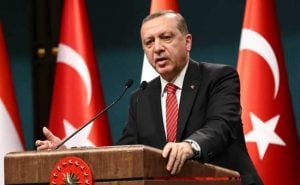
Bonnie Faulkner: What about the reported July 2016 attempted coup d’état against Turkish President Erdogan? There were also widespread reports that it was the Russian Federation that tipped off Erdogan in time for him to flee his vacation residence. Assuming that this coup was real and that the US was indeed behind it, wouldn’t this event be enough to turn Erdogan against the US and toward Russia? And why would the US have wanted to get rid of Erdogan?
Michel Chossudovsky: Well, I think certainly that Turkish coup d’état attempt in July 2016 pointed to a major turning point. It led to a realignment of alliances almost immediately. We recall that prior to that coup there was a very strained relationship between Turkey and Russia, and the fact that Turkey was facilitating the entry of war ships into the Black Sea. And in the wake of that coup Erdogan, first of all, I think did in fact decide to curtail Turkey’s relations with the United States. There’s no doubt about that. It’s been done rather gradually, but without getting into the details of what happened, I certainly think, yes, that was a watershed. And President Erdogan did intimate that the United States was complicit in the coup. He did make that statement. That was related to this personality Fethullah Gülen, who was allegedly behind the failed coup. But quite as you suggest, I think that this was the beginning of—well, we’re talking about a period of approximately three years; that was on the 15th of July, so that’s this week. So in a matter of three years the structure of alliances has evolved.
Bonnie Faulkner: Exactly, and it’s interesting that if in fact it was Russia that tipped off Erdogan about the coup . . . Turkey had already shot down a Russian jet over Syria, so if Putin was behind tipping off Erdogan, that was a pretty smart move on his part, don’t you think?
Michel Chossudovsky: I think that Putin is a very astute diplomat with a background in intelligence. He has managed to establish good personal relations with a number of leaders including Erdogan. I don’t see Turkey, even if there’s some kind of coup by the United States, I don’t see that necessarily leading to a shift in geopolitical alliances. I mean, Turkey has been an ally of the United States from the beginning of the Cold War, but this, again, 2016 marks I think the beginning of a new structure of alliances.
And note there’s a lot more to that. Just recently, President Erdogan was in consultation with leaders of former Soviet republics. Of course, there’s an agenda there in Central Asia and then also now Turkey is a dialogue partner of the SCO, the Shanghai Cooperation Organization. Now the Shanghai Cooperation Organization is essentially dominated by two major countries, China and Russia, and then you have the former Soviet republics. But now, there are a number of countries which are either partners or observers, and it’s really evolving towards a shift in alliances. They don’t declare themselves as a military alliance, but de facto they are. The SCO has members from different countries and then there are military agreements, but they’re not officially part of the SCO.
Now, Pakistan is a full member of the SCO. India is also a full member, which means that if there are conflicts between India and Pakistan, they have to be monitored under the auspices of the SCO; that’s one of their rules. So that again, both China and Russia now have an inroad into South Asia. Well, as it stands the Modi government in India is building or renewing its alliance with the United States, but that alliance with the United States is very fragile, because if there’s a change of government in India it may in fact take on a different course. And they are building a military alliance with the United States while at the same time being a full member of the SCO.
So it’s much, much broader. The structure of alliances is collapsing. What is unfolding is new avenues of trade investment, of course China’s Belt and Road and different alignments of many countries which are moving away from the West and establishing or inserting themselves into this Eurasian project. I think that again if Turkey withdraws from NATO further changes will occur within the European landscape with countries possibly withdrawing from the North Atlantic Treaty Organization.
Bonnie Faulkner: In your article, As Russian Missiles Arrive In Turkey, Erdogan Crosses a Rubicon, you write that, “Turkey’s de facto exit from NATO points to an historical shift in the structure of military alliances, which could potentially contribute to weakening US hegemony in the Middle East as well as creating conditions which could lead to a break-up of the North Atlantic Treaty Organization, NATO.” How important to the survival of NATO is Turkey?
Michel Chossudovsky: Well, It’s very important because Turkey is, after the United States, the NATO heavyweight. Its conventional forces are significant even when compared to countries like Germany and France and Britain. They have the largest conventional forces of the North Atlantic Treaty Organization. If NATO is to be involved in a US-led war in the Middle East, the only NATO member state which has a foot in the Middle East is Turkey. And consequently, I’m saying again, it is very difficult for the United States to build a cohesive alliance directed against Iran without Turkey within the NATO structure.
If we compare NATO’s posture with regard to Russia in Eastern Europe, it’s much more cohesive and the discourse is more cohesive, but that could crack as well. Within NATO there is a sort of a consensus but it’s a propaganda initiative, in fact, because we are persistently told that Russia is going to invade the European Union. People are led to believe that they have to defend the European Union against Russian aggression. But that discourse is far more cohesive within the European landscape than it is within the Middle East landscape. The US is relying on its partners in the European Union, particularly Germany and France, and Britain as well, but Britain is in turmoil at present. As far as building a set of alliances with regard to the Middle East, they are in a bind. And they are in a bind because Turkey is sleeping with the enemy, and members of the Gulf Cooperation Council are also sleeping with the enemy, and Pakistan is sleeping with the enemy. So there we are.
Bonnie Faulkner: Did we ever have any understanding of why the United States wanted to depose Erdogan? I never understood that.
Michel Chossudovsky: Let me go back a little bit. This goes back quite a number of years. The United States had envisaged a redefinition of the borders of the Middle East. It was called the New Middle East. And they had established a map, which essentially provided the structure of what the Middle East should look like. This map I think was first published . . . well, it was more than ten years ago; it was in 2006. It was a map by Lieutenant Colonel Ralph Peters, but it was published in the Armed Forces Journal, it was presented in the National War Academy, it was used for teaching purposes. And apparently what happened is that this was also used in NATO workshops of, we’re talking about military doctrine, because this map essentially carves Turkey into half. It has Turkey and then it has a free Kurdistan and the free Kurdistan is made up of Kurds from Iraq, Turkey, and Iran. So they’ve created a new country.
The US project was ultimately to Balkanize the Middle East into smaller countries, a bit what they did in the Balkans, so that you had an Arab Shia state, the Sunni state, the free Kurdistan, the Islamic Sacred State of Saudi Arabia and so on. That map is well known in military circles and it’s been analyzed.
But essentially Turkey’s resentment in relation to the United States is that essentially they want to carve up Turkey. And Erdogan’s project is the Greater Ottoman; it’s an extension of Turkish influence beyond Turkish borders and it certainly would not accept any carving up of the national territory of Turkey. In fact, if you look at that map—that was the US war academy map—they cut it in half.
So that’s the background. They were privy to the fact that there were documents which pointed to America’s intent to ultimately carve up Turkey, in the same way as they carved Yugoslavia. I understood that at one point that that map was brought to the consideration of members or the staff of NATO, and the Turkish delegation to that venue walked out when they saw the map. They were absolutely, they were very offended.
Bonnie Faulkner: Michel Chossudovsky, thank you so much.
Michel Chossudovsky: Thank you. Delighted. Thank you very much.
I’ve been speaking with Michel Chossudovsky. Today’s show has been: US Foreign Policy in Shambles – NATO and the Middle East. Michel Chossudovsky is the Founder, Director and Editor of the Center for Research on Globalization, based in Montreal, Québec. The Global Research website, globalresearch.ca, publishes news articles, commentary, background research and analysis. Michel Chossudovsky is the author of eleven books including The Globalization of Poverty and the New World Order, War and Globalization: The Truth Behind September Eleventh, America’s War on Terrorism,The Globalization of War, and America’s Long War Against Humanity. Visit globalresearch.ca.
Guns and Butter is produced by Bonnie Faulkner, Yarrow Mahko and Tony Rango. Visit us at gunsandbutter.org to listen to past programs, comment on shows, or join our email list to receive our newsletter that includes recent shows and updates. Email us at [email protected]. Follow us on Twitter at gandbradio.
*
Note to readers: please click the share buttons above or below. Forward this article to your email lists. Crosspost on your blog site, internet forums. etc.
This interview first appeared on Guns and Butter.










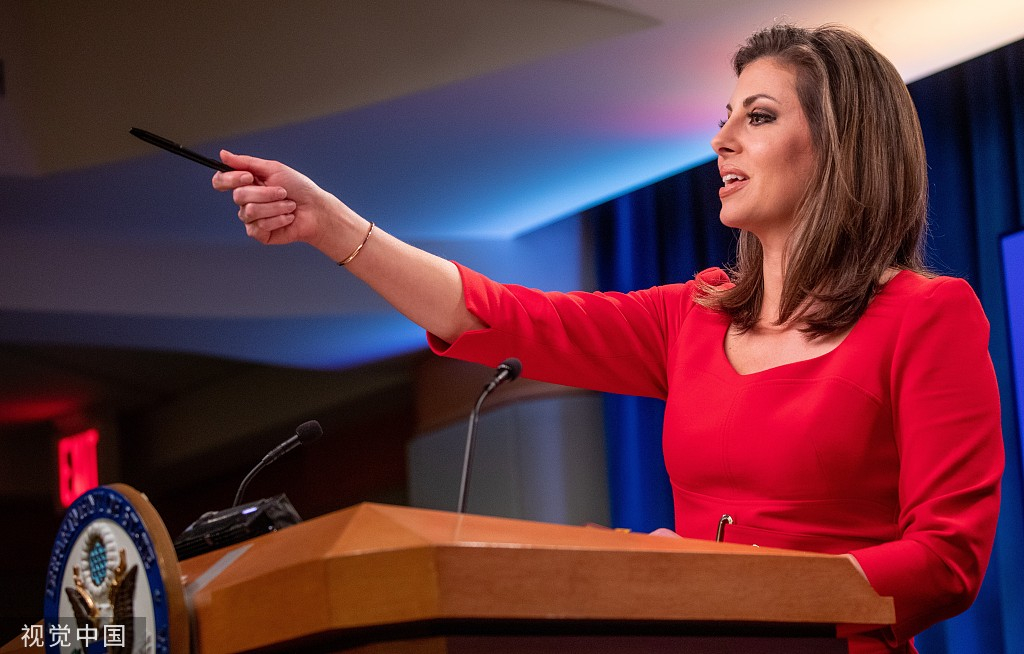
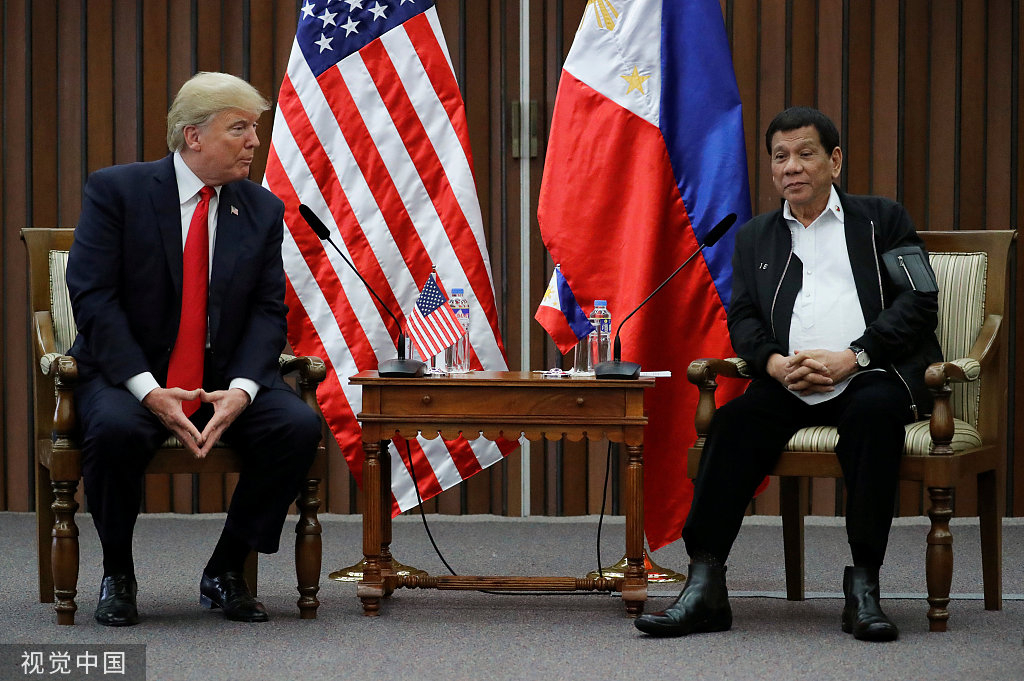






 Michel Chossudovsky: Back in the ‘90s there was an alliance between Israel and Turkey. It was a bilateral alliance, and it was a very close alliance between Turkey and Israel. Now, without going into the details, that alliance collapsed, and it also collapsed in relation to the actions of Israel against the Palestinian solidarity movement, and remember the Mavi Marmara boat, which was attacked by IDF forces. But it would appear that that alliance is dead, the bilateral relationship between Israel and Turkey.
Michel Chossudovsky: Back in the ‘90s there was an alliance between Israel and Turkey. It was a bilateral alliance, and it was a very close alliance between Turkey and Israel. Now, without going into the details, that alliance collapsed, and it also collapsed in relation to the actions of Israel against the Palestinian solidarity movement, and remember the Mavi Marmara boat, which was attacked by IDF forces. But it would appear that that alliance is dead, the bilateral relationship between Israel and Turkey.
